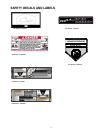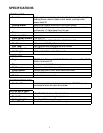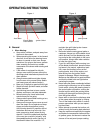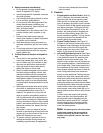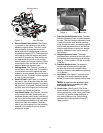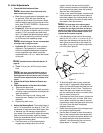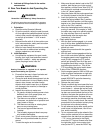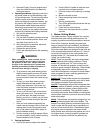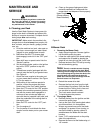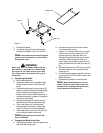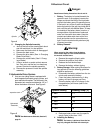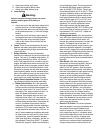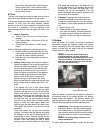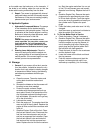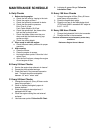
16
h. Gasoline Engine: Once the engine starts,
move the choke/throttle to the detent as
the engine warms.
4.
Operating the Mower:
Operating a zero-turn-
ing-radius mower is not like operating a trac-
tor-type riding mower. The zero-turning-radius
mower is much more maneuverable and
much less fatiguing to operate. However, get
-
ting used to the fingertip control of the zero-
turning-radius mower takes some practice.
We strongly recommend that you locate a
“test area” where you can operate the mower
for about 30 minutes without being disturbed.
a. Get into the operator’s seat.
b. Start the engine.
c. Use the deck lift pedal to raise the mowing
deck to the transport position. Make sure
the blade clutch switch is off.
d. After the engine has warmed, adjust the
throttle to the fast position.
e. Release the parking brake.
f. Fold in the steering levers to the operating
position.
WARNING:
When operating this mower forward, do not
allow the steering levers to return to the neu
-
tral position on their own. Always maintain a
firm grip on the steering levers, operate them
smoothly and avoid any sudden movements of
the levers when starting or stopping.
g. To go forward, move both steering levers
slightly forward and the mower will slowly
move forward. The farther you move the
levers forward the faster the mower will go
forward.
h. To back up, move both steering levers
slightly backward and the mower will
slowly move backward. The farther you
move the levers backward the faster the
mower will go backward.
i. To turn, pull the lever back on the side to
which you want to turn. The farther back
you pull the lever, the faster and more
sharply you will turn. Initially, you will have
to be careful to avoid turning too fast and
too far.
j. After you have mastered operating the
mower, use the transport lever to lower the
mowing deck to the cutting position and
pull on the electric blade clutch switch to
start the blades rotating.
k. Practice mowing in straight passes. When
you feel confident, slowly practice mowing
around obstacles such as trees.
5. Parking the Mower:
a. Push off the electric blade clutch switch.
b. Use the Deck Lift pedal to raise the mow-
ing deck to the transport position.
c. Drive the mower to the cleanup or storage
area.
d. Move the throttle to slow.
e. Place the steering levers in the neutral
position.
f. Set the parking brake.
g. Turn off the ignition switch and take the key
from the switch.
h. Close the fuel shutoff valves.
i. Never park near open flames or ignition
sources.
I. Mower Cutting Blades
The blades normally “factory installed” on a mower
afford the best grass cutting performance on the
majority of grasses and mowing conditions; however,
there will be occasions whereby the grass type,
stage of grass growth, soil conditions, and weather
conditions will require different cutting blade types.
Since the mower decks are designed so that over-lap
of the cutting blades generally exceed 1.5”, there is
no need for orientation of one cutting blade to an
adjacent blade (I.E., the blades do not need to be
“timed” nor synchronized).
Hi-lift- These are generally the best cutting blades
for most grasses and mowing conditions. These
blades will provide extra “lift” for the thinner leaf
grasses, will handle lush grasses, and will provide
maximum grass and debris discharge. These blades
are generally required for material collection sys
-
tems. More horsepower is required for these blades
when compared to others, and they generally pro
-
duce the highest noise levels.
Medium-lift- These blades require less horsepower
than the hi-lift, and they generally work well in wider
leaf grasses and some mulch applications.
Low-lift- These blades require less horsepower than
hi-lift and medium-lift blades, and they generally work
best with wide leaf grasses, sparse grass growth,
and sandy soil conditions. They generally produce
the lowest noise levels. Bahia blades are configured
without offset, and with a maximum amount of sharp
-
ened cutting edge.
Mulch- These blades are generally designed for use
in cutting decks equipped with mulch baffles. The
shape of the blade generally produces higher turbu
-
lence in order that the grass can be repeatedly cut
and re-cut into smaller pieces. These blades gener
-
ally require more horsepower than other blades.
Mulch blades work best when the grasses are cut at
the highest levels, minimal lengths of grasses are
removed, and grass conditions are generally dry.



